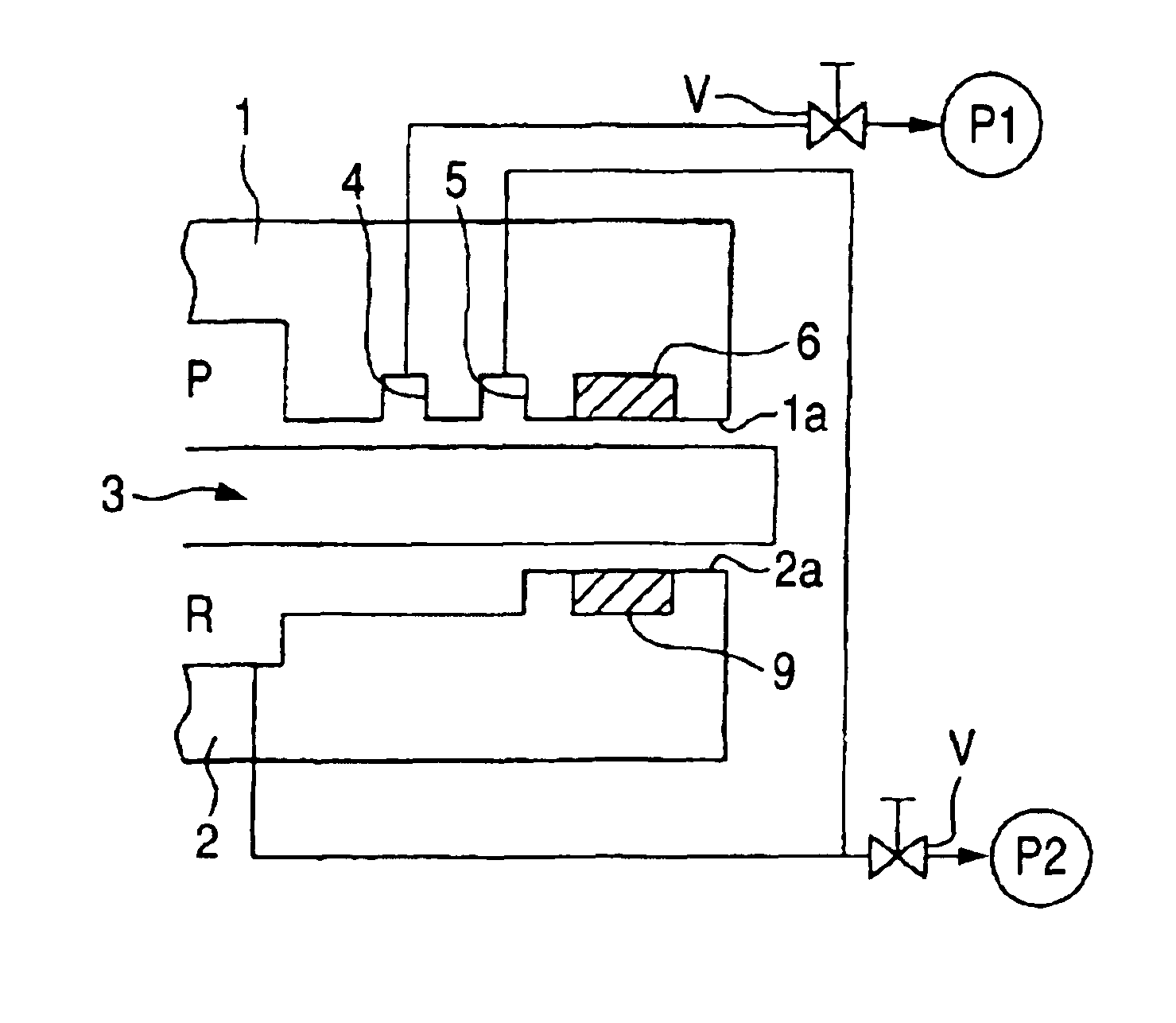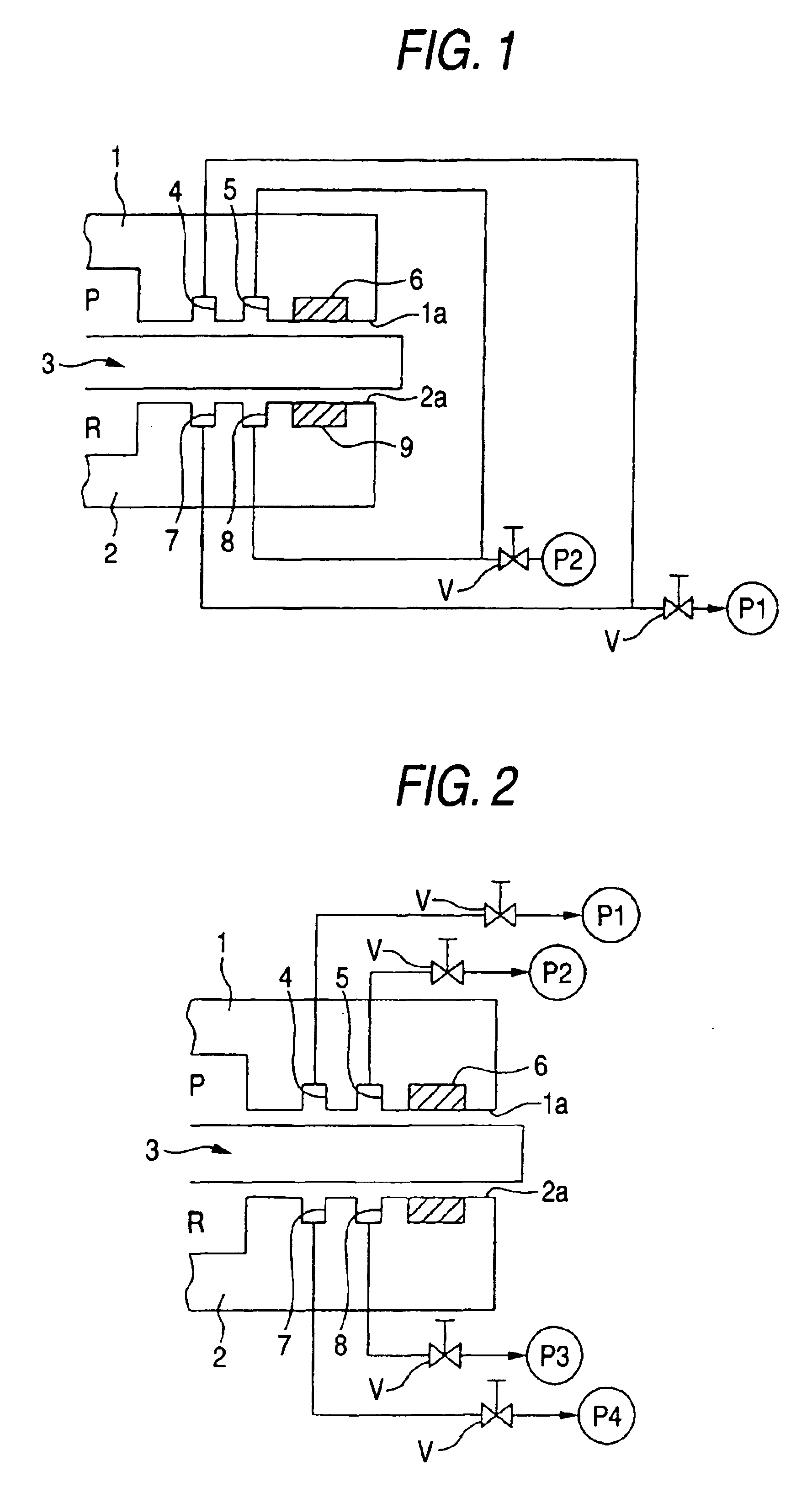Positioning apparatus
a technology of positioning apparatus and positioning chamber, which is applied in the direction of machines/engines, instruments, printing machines, etc., can solve the problems of inability to achieve good processing accuracy, minute deformation of the casing, and contamination of the inside of the process chamber with lubricant supplied to a moving part thereo
- Summary
- Abstract
- Description
- Claims
- Application Information
AI Technical Summary
Benefits of technology
Problems solved by technology
Method used
Image
Examples
first embodiment
[0073]Hereinafter, preferred embodiments of the invention are described with reference to the accompanying drawings. FIG. 5 is a front sectional view of a positioning apparatus 110 according to the invention, and shows this embodiment by omitting an upper part of sealed casing and simplifying the differential pumping seal and the hydrostatic bearing. FIG. 6 is a sectional view of the positioning apparatus 110 taken on line VI—VI of FIG. 5 in the direction of arrows. FIG. 7 is a sectional view of the positioning apparatus 110 taken on line VII—VII of FIG. 6 in the direction of arrows. Each of FIGS. 8 to 10 is a sectional view of the positioning apparatus 110 taken on an associated one of lines VIII—VIII, IX—IX, and X—X of FIG. 6 in the direction of arrows.
[0074]As illustrated in FIG. 5, the positioning apparatus 110 according to this embodiment has a first casing 120, which contains a process chamber P and has an opening 120a linking the process chamber P with the outside thereof, a ...
second embodiment
[0093]Further, the valve V2 and the actuator 191 are associated with the exhaust pump P2 for exhausting air in the decompression chamber R. Moreover, only the exhaustion of air from the decompression chamber R is stopped by the valve V2 and the actuator 141. In addition to the aforementioned case, each of the aforementioned control device can be used for temporarily reducing the gap between the moving block 3 and the intermediate block 170, alternatively, for bringing both the moving block 3 and the intermediate block 170 into intimate contact with each other. Incidentally, in the second embodiment, similarly as the valves V and V1, a valve adapted to perform only switching between ON and OFF (that is, opened and closed states) is employed as the valve V2 provided at the position at which only an operation of sucking the labyrinth seal 160 is interrupted. Instead of this valve, a valve, such as a needle valve, enabled to perform pressure control operations (that is, flow rate contro...
third embodiment
[0098]Although not shown, an example of modification of the aforementioned embodiment is adapted when an operation of sucking the inner differential pressure chamber of the inside of the differential pumping seal 150 provided at the side of the process chamber P is performed by a first exhaust pump, when an operation of sucking the outer differential pressure chamber of the differential pumping seal 150 provided at the side of an external portion is performed by a second exhaust pump, when an operation of sucking the differential pumping seal 160 is performed by a third exhaust pump, and even though the valve V1 is formed at a position where only an operation of sucking the differential pumping seal 160 by the third exhaust pump is interrupted in case that the valve V1 is driven and closed by the actuator 190. This modification also operates similar to the Incidentally, it is optional to combine this example of modification with each of the aforementioned embodiments. Further, alth...
PUM
 Login to View More
Login to View More Abstract
Description
Claims
Application Information
 Login to View More
Login to View More - R&D
- Intellectual Property
- Life Sciences
- Materials
- Tech Scout
- Unparalleled Data Quality
- Higher Quality Content
- 60% Fewer Hallucinations
Browse by: Latest US Patents, China's latest patents, Technical Efficacy Thesaurus, Application Domain, Technology Topic, Popular Technical Reports.
© 2025 PatSnap. All rights reserved.Legal|Privacy policy|Modern Slavery Act Transparency Statement|Sitemap|About US| Contact US: help@patsnap.com



